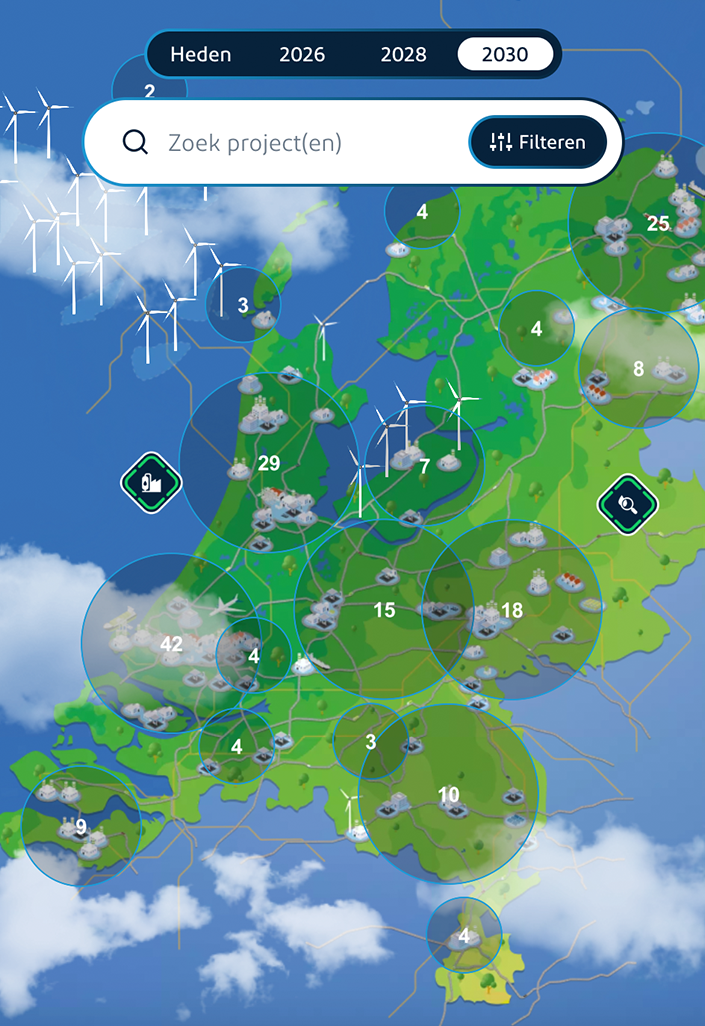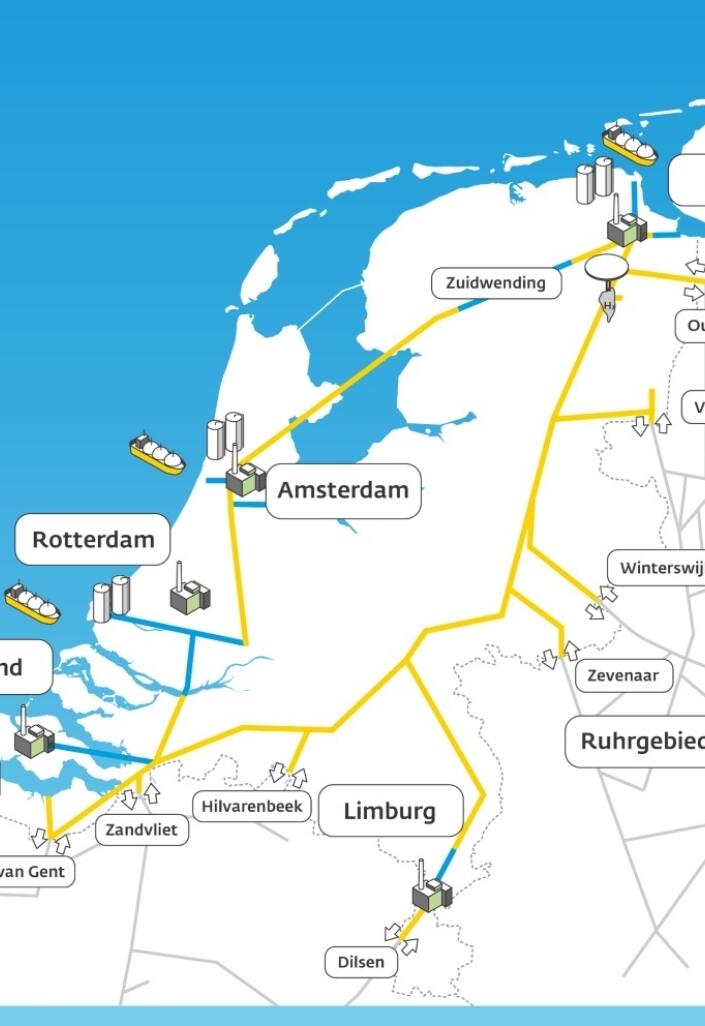
Missie nieuws
Volg hier het laatste Missie H2 nieuws!
Hydrogen action plan
The European industry is at a turning point: high energy prices and geopolitical tensions are threatening our competitive position. For the Dutch industry, the situation is even more dire, as we are also dealing with even higher energy prices within the European context.
Read more
Interactive Hydrogen Map
The Hydrogen Map, developed by Mission H2 together with TKI New Gas, contains the most comprehensive and up-to-date map of the Netherlands with the many initiatives that already exist in the field of hydrogen. Moreover, the interactive map offers the unique opportunity to travel through time to see the development of the Netherlands as the Hydrogen Country 2030.
Check out the hydrogen map
Why Mission H2?
Gasunie, Shell Netherlands, Remeha, Toyota, Port of Amsterdam, Groningen Seaports, Vopak and Eneco are taking the lead in building the Dutch hydrogen economy. The urgency to kickstart the hydrogen economy is present. Companies and governments must jointly ensure sufficient signed investment decisions by the summer of 2024, in order to realize sufficient power from green hydrogen by 2030. We invite all companies to join in.

Why hydrogen?
In the Netherlands we have our climate goals, through which we want to reduce our CO2 emissions as much as possible. That starts with more energy from sustainable sources like sun and wind. But hydrogen can also help us. For example, as a sustainable alternative to fossil fuels. Hydrogen is also easy to store in large quantities. A nice reserve for those moments when sustainable energy sources like sun or wind fail for a while. Or the other way around: when there is a lot of solar and wind energy.

Position of hydrogen in 2050
The global energy mix in 2050 is likely to be 20% hydrogen. In comparison, the current energy mix is 20% electricity and 80% natural gas or fossil fuels. Our climate goals will significantly change this situation in the near future. The share of electricity generated by wind and solar will increase significantly. For a number of applications such as heavy transport, high-temperature processes in industry, and aviation a good electrical solution is still lacking and there is a need for a sustainable gas. Hydrogen can play a useful role here. In addition, hydrogen is important in the form of large-scale storage for times when it is windless and cloudy.

Hydrogen in the context of direct electrification
We need hydrogen to decarbonize sectors where direct electrification is not an option. Those sectors include the steel industry, the aviation industry (using synthetic kerosene jet fuel), and long-distance transportation (running on fuels made from hydrogen, methanol, or ammonia). Second, hydrogen can provide a balancing capacity to achieve a reliable energy system at the lowest social cost. And third, we need hydrogen for seasonal storage and for stability in low wind and cloudy conditions in northwestern Europe. For example, hydrogen can be stored under pressure in already existing salt caverns and empty gas fields.

The Netherlands: Hydrogen Nation 2030
The Netherlands is excellently positioned for hydrogen. We have the North Sea with a lot of wind energy, technological knowledge, and an infrastructure for hydrogen import, transport, and storage. In addition, the Netherlands and neighboring countries have many energy-intensive plants as potential customers and we have built a strong knowledge economy. In short, our country can potentially become the hydrogen nation of 2030.

Onze missie kalender
Blijf op de hoogte met de Missie H2 kalender.
- Missie H2 event
- TeamNL event








